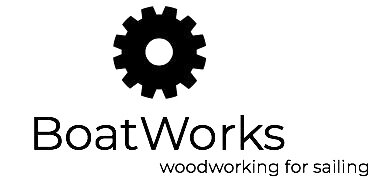Cockpit floor structure
Winter weather is back but I’m getting nervous when I check the calendar: ideally I would like to put Meritaten into water by end of April. It is only few weeks left while I’m still deep in renovation work. Seems that I took too much this time.
Anyhow, the progress is steady although too slow to my taste.
It is now mostly precision work so all these measurements, dry fitting, going back and forth between boat and workshop takes lots of time.
During last days I have been working on new cockpit floor and support structures. All laminated oak beams have been cleaned from epoxy, planed flat on reference faces and cut to size. Delivery of bronze wood screws just arrived so I took all parts to the boat for dry-fit installation.
With screws came new brass hinges for deck hatch. They will replace fragile piano-hinges which, in my opinion, do not rise confidence in stormy weather. New hinges are much stronger and will be thru-bolted to the hatch.
Back in the workshop I cut new plywood floor.
Measurements from existing engine hatches were guidelines as the old floor was gone in happy demolition, due to rot.
There should be perfect fit between these plywood panels, to minimise rubber filler between them and to get proper sealing. Only hand planing, after table saw cut, can get such perfect fit so I sweated out few hours to get all joining surfaces perfectly straight and perpendicular.
I can’t complain - I really enjoy this type of work.
Using big jointer plane is a real pleasure - and for such long edges I used “mother of all planes”, absolutely monstrous , heavy beast: No.8.
While being at it I’ve also made a plywood form to cast new lead bricks - to close keel bolts’ pockets in the ballast keel. I’ve used some leftovers of concrete-casting plywood which I got some time ago. It was again precision work as the plugs have to be only slightly bigger than keel pockets - to enable hammering them in place. I guesstimated amount of shrinking which hot lead will exhibit upon solidification. This form will be buried in the ground, to protect it from burning by dissipating heat from lead to ground.
And to protect me, should something go wrong.
Cockpit floor will be prepared for mounting but final assembly will be after we put back the engine. Easier this way. I plan to seal all plywood and laminated oak beams in epoxy. The floor will be screwed in place, not glued - to enable easy de-installation next time, if I will need to open this part of boat again. FARM liquid rubber will be used as a sealant between all adjacent surfaces. No glue, no Sika.
Dry fit of pre-cut components determined where half-deck panels should be placed.
Back to boatyard again - to final-fit support beams and cut plywood panels to perfect fit. Since nothing on the boat is square or symmetric there were quite a lot of minor adjustments needed.
Having done that I could again disassemble everything and take to my workshop for making beam joints in marked places.
I tried saving some time and made trial joints on table saw. Not a good idea indeed - apart from lots of noise and constantly present danger I’ve found that making hand-cut joints is much faster and more precise.
With a sharp saw and a set of sharp chisels this work is a pleasure.
Edge joints are quick with just a saw and final pairing with chisel.
Joints in the middle take only few minutes more.
At first I’ve made them tight fit but then I recalled that all this will be sealed with epoxy prior to assembly. Which means that all surfaces will gain circa 400um so at current stage I need to make these joints loose.
Voila!
Starboard side ready, what is left is port side and cross members. After that I can mark and scarf plywood panels and then cover everything with epoxy and varnish.













